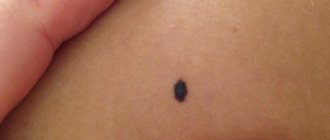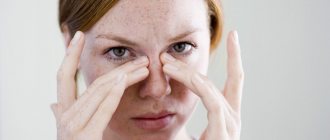Stages of formation
Bumps inside the nose form for various reasons and continue to develop in several stages at once. To avoid possible negative effects, it is important to begin timely and effective treatment. A lump in the nose on the septum forms at the initial stage of the disease. In total, experts distinguish three main stages:
- in the first, the formation is localized in the upper region of the septum;
- in the second stage, the growth spreads over most of the septum;
- the third stage is characterized by complete closure of the base of the nasal cavity.
If the necessary treatment is not provided, then in its advanced form, a lump in the nasal cavity leads to serious problems, since at this time the sense of smell is lost, and the openings of the paranasal sinuses are blocked. As a result, such a pathology can lead to a lack of air entering the body, as well as to the spread of infection.
Types of tumors of the nose and paranasal sinuses
Doctors treating cancer abroad first of all try to determine the stage of the disease.
During systematization, experts name the following types of formations:
- Benign , which, in turn, are:
- Congenital (angiomas, including lymphangioma, hemangioma).
- Highly differentiated non-malignant formations (chondromas, angiofibromas, etc.) Thus, papilloma, adenoma belong to formations of the epithelial type.
- Craniosinusonasal ones arise from the skull, and then move to the sinuses (meningiomas, angiofibromas, chondroidchordomas, chordomas, cementomas, teratomas).
- Malignant - a number of highly differentiated, malignant, differentiated tumors (connective tissue, developing from pigmented neuroectoderm). In addition, in the course of such poor-quality processes, 4 stages are distinguished.
Symptoms of the lesion
In some cases, determining the presence of a formation in the nose is quite difficult due to the fact that many patients confuse the appearance of a lump in the nose (in the nostril) with a simple cold. The grown polyp will make itself felt with the following symptoms:
- difficulty breathing;
- change in sense of smell;
- regular sneezing;
- nasal discharge that has not previously been observed.
Over time, in addition to the described symptoms, the patient may experience pain in the head, a feeling of fullness in the ears, pain and burning in the nose, and hearing loss. When the first signs of pathology appear, it is important to seek help from a doctor as soon as possible.
Treatment methods in Medscan
Surgical intervention during oncological process is performed in the case of a large tumor. Restore lost bone tissue structures using microsurgery and implantation.
To treat nasal cancer, the radiation therapy department of the Medscan Oncology Center uses expert-class equipment Varian True Beam. High-precision equipment provides effective results with minimal damage to healthy tissue structures.
For cancer of the nasal cavity and sinuses, a consultation with a chemotherapist is necessary. Medscan applies international standards for chemotherapy treatment, which are highly effective in practice. Our patients take only proven modern drugs.
The advantages of treatment at Medscan also include the availability of dynamic monitoring of the patient. The service will help to identify an early relapse after a course of treatment and eliminate it in a timely manner.
Reasons for the appearance of education
Due to impaired control of cell division and differentiation in the nasal cavity, foci of pathological tissue growth form on the mucous membranes and upper part of the nose.
When considering the histological, pathomorphological and clinical factors for the appearance of a bump in the nose in a child and an adult, doctors identified the following types of formations:
- Benign. They are described by long-term development, as well as preservation of the functions of the tissue structure. All neoplasms differ in the type of cells of which they are composed. They can be presented in the form of atheroma, fibroma, osteoma, chondroma, epitheloma, adenoma.
- Malignant. Such formations are prone to metastasis. They negatively affect the entire human body and lead to cancer intoxication. In an x-ray photo of a lump in the nose, the tumor appears as a white-gray mass. More common types include sarcoma, neurogenic cone, and lymphoma.
The appearance of a round polyp harms the patient’s normal breathing. Such formations may not provoke pain symptoms, but they look very unpleasant and even affect self-esteem.
Features of tumors of the nose and sinuses
As for the structure of the nasal cavity, it includes 2 parts, that is, it is divided by a septum, and its surface is covered with mucous membrane. The task of this cavity is this: the air, having passed through it, becomes more humid and warmer even before penetrating inside the respiratory system.
Low-quality formations of the nasal mucosa are about 1.8% of all formations in the head and neck area. They are diagnosed in both men and women with approximately equal frequency. Pathology often occurs over the age of 50. The nasal zone contains tissues with unequal embryogenesis. They are in a rather difficult relationship with each other, because of this, several types of tumors are formed here, the structure of the formations is also different. For example, intranasal cranial hernias are predominantly observed among children.
Neoplasms of such localization, regardless of their nature, are especially dangerous due to their proximity to the brain, wide possibilities of penetration into the eye sockets, which means they can cause serious problems. The skull has special sinuses, which are located behind the bridge of the nose in the thickness of the jaw. In addition, there are also frontal and sphenoidal sinuses. Each is connected to the nose, making possible the separation of mucus and the process of air exchange. The sinuses themselves are lined with mucous membrane, and in it, under the negative influence of a number of factors, the most common type of cancer in this area can develop, affecting the mucous membrane.
Common causes
The reasons why a lump has formed in the nose may be the following:
- Changes in adolescence. During this period, the appearance of acne is most often associated with changes in hormonal levels during puberty, since during this period of time the body continues to actively develop against the background of a large amount of steroid hormones. Some of them can significantly enhance the functioning of the sebaceous glands, which leads to clogged pores and the formation of closed type acne (bumps).
- Cosmetic products. Some cosmetics can react with the skin and nasal mucosa, leading to irritation with severe burning. All this provokes the appearance of an unpleasant formation. When choosing cosmetics, it is very important to pay attention mainly to those cosmetics that do not irritate the skin.
- Medications. Some medications, especially those with a strong effect (prescribed by a doctor), can provoke the appearance of bumps in the nose, face or body due to the body’s negative reaction to taking them. In this case, a dermatologist or other specialist should prescribe an alternative medicine to the patient.
- The need to replenish vitamins in the body. A lack of vitamin A in daily diet can also cause an adult or child to develop a bump in the nose. Vitamin A also helps cleanse the skin, keeping it in good condition.
- Possible diseases. If a lump appears in the nose, then the factor in its appearance may be some diseases of the endocrine immune system, circulatory disorders, or infectious lesions. Experts note that even one bump on the nose can indicate serious problems with the functioning of the liver or heart.
- Poor hygiene. Dust and excess skin secretions cause clogged pores, which leads to the appearance of acne on any part of the body, including the nose.
- Emotional experiences. Severe stress can also cause a bump to appear inside the nose. It disrupts the patient's hormonal state, which provokes the sebaceous glands to produce more sebum.
Forewarned is forearmed
See also Treatment of ENT diseases Removal of a cyst in the nose Treatment of a maxillary sinus cyst Surgery to remove a cyst in the maxillary sinus
Following simple preventive measures will help to avoid the appearance of cysts in the right or left maxillary sinus:
- Monitor your immune system and try not to catch a cold. In frosty weather, refrain from visiting the pool and playing outdoor sports.
- If you get sick with ARVI, don’t let the disease take its course. It is viral diseases that become the main cause of chronic sinusitis, and after them - cysts.
- Visit your dentist regularly. Sometimes inflammation from the roots of the teeth spreads to the sinuses.
- After treatment, cysts may appear again. To prevent relapse, see an otolaryngologist regularly. Find out what is causing the problem. You may need to correct a deviated nasal septum or get rid of polyps.
And remember, any pathology must be treated by a specialist. Home treatment is ineffective and can have serious consequences.
The appearance of cysts and polyps
Nasal polyps and cysts are tumors that usually form deep in the nose. They are characterized by severe pain and unpleasant symptoms. Cysts often appear in patients with sinusitis. It is not possible to determine the presence of nasal cysts on your own, since in most cases they form inside the nasal sinuses.
But polyps (formations that have spread to nearby tissues) can often be observed in the nasal cavity. Allergic reactions to certain aerosols or sprays can lead to the appearance of painful, bumpy ulcers or polyps inside the organ.
Risk factors for tumors of the nose and paranasal sinuses
Cancer of the nasal cavity and sinuses often originates from the oropharynx. Experts have not yet identified the exact reasons for the appearance of this pathology. But still, for each type of cancer there is a list of probable risk factors.
Thus, risk factors for tumors (especially malignant) organs in this area include:
- Work associated with the action of a number of chemical compounds (often in the manufacture of furniture, in the woodworking process, in the manufacture of shoes, in metallurgy enterprises, in the flour milling industry).
- Background processes preceding the onset of a tumor (chronic changes in the mucous membrane of an inflammatory nature).
- Formations of such localization that have a tendency to malignancy (for example, an adenoma).
- Smoking is another factor that increases the chances of developing such a disease.
As a rule, people over 40 suffer from this disease. As for gender, as in the treatment of lung cancer abroad, men are more susceptible to this pathology.
Damage to the mucosa
A lump in the nose of a child or adult often looks like a simple pimple. Such unpleasant bumps on the inside of the nose are more sensitive than formations on other parts of the body. A painful bump inside the nose can appear as a result of inflammation of the hair follicles. Due to the humid environment inside the organ, various microorganisms, including pathogenic ones, are constantly present in it. They are the ones who can penetrate the follicle and begin rapid reproduction in it. As a result of this process, folliculitis begins - a large amount of pus accumulates in one place, which leads to the appearance of a pimple or bump inside the nose. You should know exactly what it is and what such formation looks like. You need to see a doctor or look at a photo of a bump in the nose of a child (adult).
Headache - cyst is to blame
Small cysts in the maxillary sinuses do not manifest themselves in any way. The patient can only find out about them by chance, for example, during an examination for sinusitis.
Another thing is grown-up education. Reaching the size of the nasal sinus, the cyst rests against its walls and compresses the nerve endings. The patient begins to complain of facial pain radiating to the temples, eyes and teeth. Often, not understanding what’s wrong, a person first turns to a dentist or ophthalmologist.
Further more. Extending beyond the maxillary sinus, the cyst compresses the trigeminal nerve, which causes severe headaches. Swelling appears on the face. Due to the displacement of the nasal wall, breathing on the affected side becomes difficult. In the worst case, it can result in otitis media, bronchitis and meningitis.
Symptoms of the disease
In the presence of a malignant neoplasm, the patient experiences the following symptoms:
- severe pain in the head;
- difficulty breathing through the nose;
- presence of bloody discharge from the nose;
- noticeable swelling near the eyes;
- inflammatory processes of lymph nodes;
- ear pain;
- significant visual impairment.
If you have such symptoms and a bump in the nose, it is very important to conduct a timely diagnosis in a medical institution to determine the exact disease and prescribe the correct and effective treatment.
Homeopathic remedies for bumps on the nose
| Drugs | Purpose |
| Thuja | For warts, polyps of various types, angiomas, lipomas and other types of growths. |
| Arnica | For bumps that appear as a result of injuries. |
| Argentum Nitricum | For warts located on the nasal mucosa. |
| Causticum | Treats large soft warts and bumps that often bleed. |
| Malavit | For all types of warts. |
| Barium carbonicum | In the treatment of wen on the nose (lipomas), atheromas. |
| Acidum Nitricum | For soft warts that have a stalk. |
| Arsenicum album | For senile warts that dry out, accompanied by itching and burning. |
| Silicea | For fibromas, hemangiomas. |
What is important to do
If the patient determines that a lump has formed in the nose, then he needs to make an appointment with an otolaryngologist as soon as possible. A qualified specialist will accurately determine the cause of the formation and formulate an effective treatment. Self-medication in this case will not bring the desired effect, and can also lead to dangerous complications.
The most common way to get rid of bumps inside the nose is surgical excision. If there are infectious inflammations, it is important not to try to squeeze out the ulcers, so as not to worsen the condition and develop complications. At the initial stage of the lesion, the symptom of which is a lump inside the nose, the specialist prescribes conservative treatment with topical medications.
It must be remembered that when a polyp forms, all symptoms may indicate an allergic reaction. But if after ten days recovery does not occur, then it is important not to delay visiting a doctor.
Treatment of facial atheroma
Getting rid of atheroma using traditional methods of treatment, drugs of different release forms, or self-dissection is ineffective and dangerous . Atheroma can only be removed surgically along with the capsule. The smaller the formation, the easier the procedure will be and the greater the likelihood of being left without a scar on your face. Several methods of operating on atheroma on the face are practiced.
- Laser destruction of atheroma is the most effective and painless treatment method, after which there is no scar. Used to remove formations with a diameter of up to 5 mm.
- Laser excision of atheroma is an innovative treatment method that does not require a recovery period.
- The classic operation with a scalpel is the removal of atheroma. It is performed under local anesthesia.
During the inflammatory process, the doctor cleans out the contents and disinfects the atheroma cavity, then performs an operation to remove the capsule and, if necessary, the affected tissue. Even if the atheroma does not bother you and “does not spoil the beauty,” it still needs to be removed. Pressure on nearby tissues causes them to become deformed, and the possibility of inflammation puts your health at risk.
Diagnostic measures
Treatment of a bump in the nose is prescribed exclusively by a professional after diagnosis and examination of the patient, while he takes into account the stage of development of the disease, the reasons for its appearance, as well as the features of the anatomical structure.
Diagnostic measures most often include an analysis of the patient’s complaints, a thorough examination of the nasal cavity using a rhinoscope or endoscope. The doctor may also refer the patient to other specialists or order additional tests and biopsies. Often, growths in the nose are identified immediately after the initial examination.
Main diagnostic methods:
- rhinoscopy;
- CT or MRI of the paranasal sinuses;
- radiography.
The cost of diagnostics will directly depend on the severity of the disease and its stage of development. An appointment and consultation with a doctor in Moscow will cost around 1000-2000 rubles. Complicated forms of examination can cost up to 6,000 rubles.
Prognosis for tumors of the nose and paranasal sinuses
Prognosis for such pathologies is associated with many important aspects: location, scale, type of tumor formation; age, general health status of the patient. What is also important is the moment at which the tumor was found (that is, the stage of development) - at the start of the onset of the pathology or at its advanced stage, when it recurs. Often a tumor of this localization is detected already at advanced stages, when it has spread to nearby areas. This complicates surgical treatment, significantly worsening the overall prognosis.
Lump removal
If a bump in the nose hurts, then the most effective method of eliminating it is surgery. Removal of nasal growths is currently carried out using minimally invasive methods through endoscopic rhinosurgery. It is carried out quickly and eliminates possible complications. For pain relief, local anesthetics, medicated sleep are used, and in extreme situations, general anesthesia.
This method is used when the formations in the nose are large, there are many of them, and they do not allow the patient to breathe normally. The entire procedure is carried out under the supervision of an ENT doctor and anesthesiologist. During the operation, the patient's paranasal sinuses are washed to prevent possible reappearance of the lump. At the end of the procedure, the doctor prescribes antibiotics to the patient to prevent complications.
Also, a good way of treatment is to prescribe homeopathic remedies that will have a positive effect on the entire body as a whole, and not just on the main symptoms. This method helps to effectively eliminate chronic forms of diseases.
Measures to prevent tumors of the nose and paranasal sinuses
As in the situation with the treatment of laryngeal cancer in Israel, the key factor here is the timely start of the course, which means periodic undergoing diagnostic procedures. Specialists dealing with pathologies in the area of the nose and paranasal pauses note the importance of paying attention to your own body and any deviations from the norm.
Among the preventive measures are the following:
- timely measures for the treatment of chronic inflammatory diseases, in particular benign formations of the nasal cavity, which helps to avoid the onset of a malignant process.
- the use of medications that allow you to restore immunity after the end of antitumor treatment (use of antioxidants, multivitamin complexes);
- proper diet, the presence of vitamins and other nutrients in the diet;
- mandatory use of personal protective equipment when performing work in hazardous industries.
- complete cessation of smoking, drinking alcoholic beverages, and other bad habits;
- measures to prevent viral infections and related diseases.
In addition to periodic visits to an oncologist, a number of diagnostic measures are important (x-ray of the lungs, ultrasound examination of the kidneys, lymph nodes in the neck). It should be noted that the cost of cancer treatment abroad is also largely related to the stage at which the pathology is detected.
Using folk recipes
If any growths appear in the nasal cavity, it is important to immediately go to see a doctor. Treatment of cones using traditional methods is allowed only after examination by a doctor and under his strict supervision. Such activities can also serve as a complement to comprehensive treatment.
The most effective ways are:
- washing;
- compresses;
- inhalation.
If an unpleasant growth occurs inside the nose, the patient can get advice from a doctor and prescribe effective treatment in any medical institution where specialists work in their field, who will help you quickly get rid of the problem and avoid possible complications and troubles.
Diagnostic methods in Medscan
The examination begins with an examination and interview with an oncologist. At the Medscan Oncology Center, an interdisciplinary approach is taken to each case under consideration. This eliminates errors in making a final diagnosis and during further treatment.
After rhinoscopy (examination of the nose using special mirrors), you will need to perform the following techniques:
- Pharyngoscopy. The examination helps determine the extent of tumor growth in the oral cavity.
- Radiography. Using the method, you can find out tissue disorders, the degree of deformation and asymmetry of the face.
- MRI and CT are considered the most informative methods for visualizing a tumor focus. To better assess the extent of oncological pathology, the study is performed with intravenous contrast.
- Biopsy of a tumor fragment with further histological examination.
- Ultrasound of lymph nodes and abdominal organs.
Anatomy of the external nose
The external nose has a complex anatomy, being an organ with a cartilaginous and bony skeleton, covered with thick skin. It consists of the following sections: the root (the area between the brow ridges), tapering downwards and turning into the pyramid - part of the bony skeleton of the nose, represented by the nasal bones and the frontal processes of the upper jaw.
In the pyramid, there is a back - a face facing outwards, and slopes - the side surfaces of the pyramid. The tip of the nose is the most protruding part, represented by a cartilaginous skeleton. The tip consists of several cartilages: large and small alar cartilages, lateral cartilages (also called triangular) and quadrangular septal cartilage. All these cartilages are paired, with the exception of the quadrangular one. The cartilaginous section also includes: the wings of the nose, which form the respiratory openings, the nostrils and the collumella - the fold of skin between the nostrils.
The wings of the nose are covered from the inside with skin overgrown with dense bristly hairs; they form the vestibule of the nasal cavity, which passes into the cavity itself. The skin of the tip is very tightly fused with the underlying cartilage; in the bony part, the skin lies on loose subcutaneous tissue and is easily displaced. Between the skin and cartilage there are facial muscles, thanks to which we can wrinkle our nose, flare our wings, raise and lower the tip, which serves as a demonstration of emotions. The blood supply to the nose is very good. It comes from the system of external and internal carotid arteries. Venous outflow goes both to the internal jugular vein system and to the cranial cavity. Innervation is carried out by the branches of the trigeminal nerve.
Main function of the nose
The main function of this organ is respiratory, but aesthetic and communication functions will also be important. Scientific studies have been conducted that have revealed that people recognize each other by the shape and size of the nose, as well as by its proportions relative to other parts of the face. Thus, it is one of the most important signs of objective individuality.
Different races have their own characteristics of the structure of the external nose:
- Slavic - a relatively small bone part and a more developed cartilaginous section;
- Greek or Roman - distinguished by a long, narrow pyramid of the nose, often with a hump and a relatively small cartilaginous section;
- Caucasian - large bone and cartilaginous part, often with a hump;
- negroid - characterized by a small bony part and a large, usually flattened tip with wide wings;
- Asian - distinguished by proportionally small bone and cartilaginous parts, often with a flattened back and tip.
One of the features of our olfactory organ is that it grows throughout our lives, changing with age. This is especially true for the nasolabial angle. In children, the nasolabial angle is usually obtuse, about 105 degrees; in adults, it approaches a rectangular angle; in older people, the tip often drops and the angle becomes acute.
How to prevent it?
To reduce the likelihood of polyps appearing, including recurrence (after treatment):
- Control exacerbations of asthma and allergies. To do this, you must follow the recommendations of your doctor;
- try not to inhale substances that cause inflammation of the nasal passages and sinuses (pollen, dust, chemical fumes, tobacco smoke...);
- reduce the likelihood of infections - for example, wash your hands more often;
- If you often have sinusitis, humidify the air in your home and rinse your nose properly.









